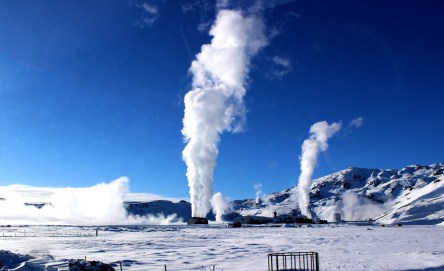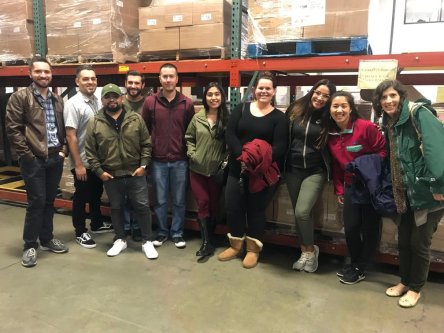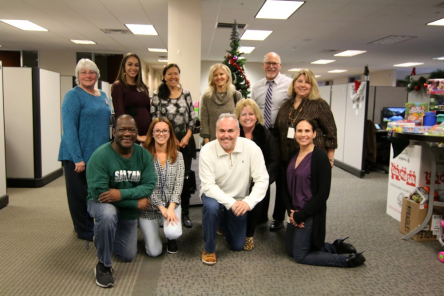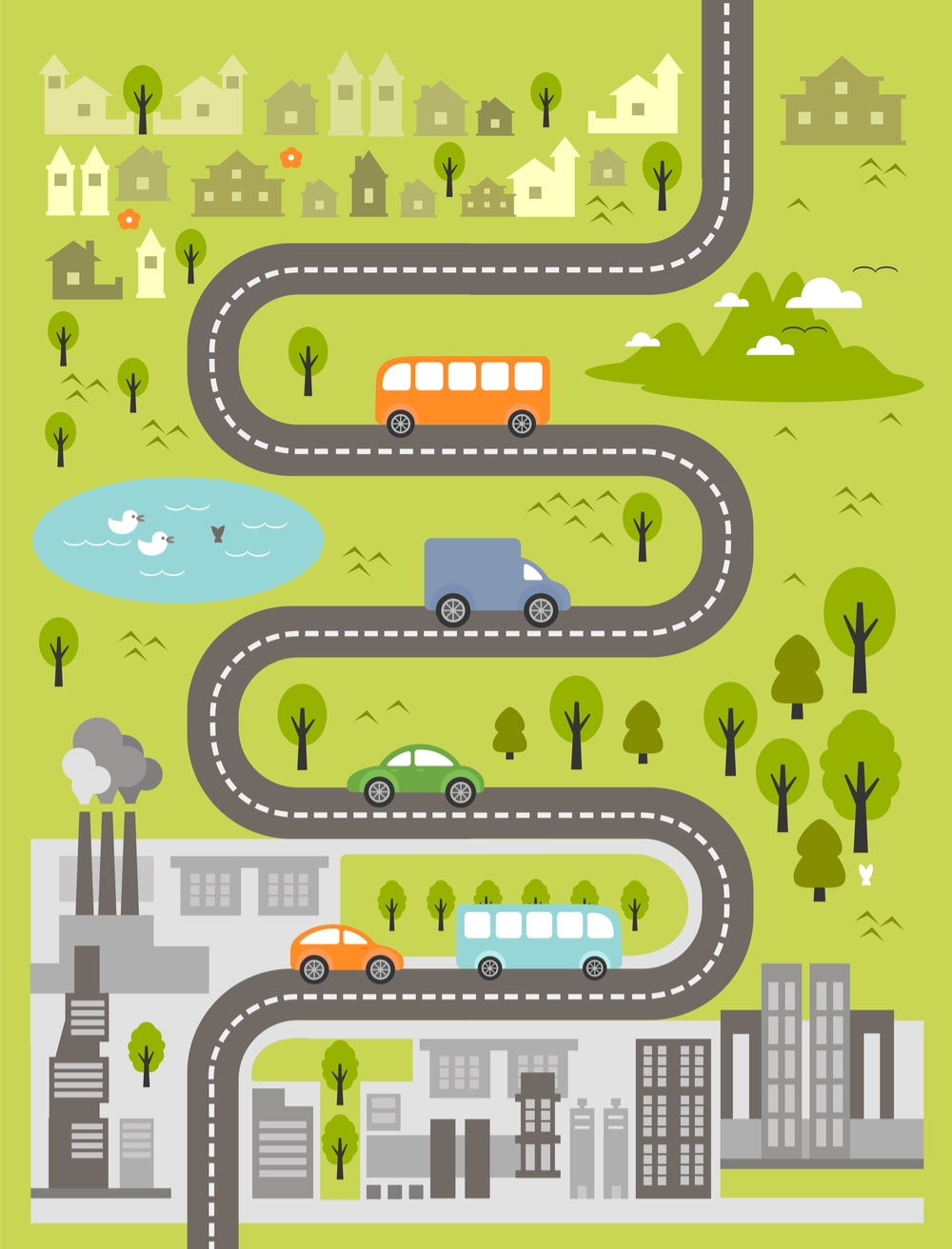Look up and there’s the sun, whose rays can be captured and converted into electricity. Peer down and see fossil fuels, the engine for much of the world’s economy. You need to burrow even further to find another key source of energy, one that’s driven by the molten essence of the Earth. Geothermal energy originates from the heat at the planet’s center. It can be captured as a source of electricity to heat and cool buildings with geothermal heat pumps, which transfer heat to buildings by pumping water or a special fluid through pipes just below the Earth’s surface. Geothermal energy can also generate electricity through geothermal power plants using wells drilled 1 to 2 miles deep into the Earth to pump steam or hot water to the surface. Tapping the Earth’s internal heat dates back thousands of years, with Roman, Chinese and Native American cultures using hot mineral springs for bathing, cooking and eating. The first geothermal plant, built in Italy in 1904, used steam to turn a turbine that powered five light bulbs. Today, more than 20 countries generate geothermal energy, according to National Geographic. Iceland and the Philippines meet nearly one-third of their electricity demand with geothermal energy, while18 power plants at the Geysers Geothermal Complex north of San Francisco comprise the world’s largest geothermal installation. The U.S., the global leader for installed geothermal capacity, provides more than 3.7 gigawatts to the national grid, according to the U.S Department of Energy. Although geothermal offers an environmentally friendly, renewable, reliable and stable energy source with the smallest land footprint of any major power source, it does have its drawbacks. These include the risk of releasing greenhouse gases that tend to congregate near geothermal power plants, power plants’ effect on fragile land stability, high...
Sharing the Bounty
Ventura County Food Share
Food strengthens the body and propels the mind. Yet one in six residents of Ventura County struggle with food insecurity. Seniors are among the vulnerable population. The local food bank and volunteers work together to end hunger, helping seniors thrive in their golden years. Ventura County Food Insecurity An inability to access healthy food impacts multiple areas of a person’s life. Hardworking people must make daily sacrifices that affect their health and wellbeing. Of the food insecure in Ventura County, 69 percent must choose between food and utilities. More than 65 percent must choose between food and medical care Among the food insecure that must make those tough calls, roughly 46,650 are seniors. Ventura County’s Agency on Aging reports that “approximately 39 percent of all elders aged 65 and older do not have enough income to meet their most basic needs.” The inaccessibility of fresh, nutritious food leads to a reliance on more affordable but less healthy options. As a result of this and other factors, 58 percent of households have a member with high blood pressure with 77 percent occurring in senior homes. About 33 percent of households in the county have a member with diabetes with 47 percent in senior households. Volunteering with Food Share Food Share of Ventura County aims to improve seniors’ quality of life. Each year, Food Share stores and distributes nearly 11 million pounds of food to those in need. The Food Share program serves nutritious meals to 74,500 people every month, about 3,100 of which are seniors. Senior programming prepares boxes of food including items such as canned fruits, vegetables, salmon, cereal, milk, peanut butter, fruit juice, and spaghetti. The nonprofit organization relies on the help of 190 pantry partners as well as volunteers. Ten Yardi Santa...
Welcome to Mobile 5G
AT&T Selects 12 Cities
We can all use faster internet! Make daily operations more efficient for your staff with the latest advance in US mobile technology. Beginning spring 2019, AT&T will offer a faster internet speed for mobile devices in 12 cities. 5G, Revamped If you feel like you already read about this early in 2018, you’re sort of right. AT&T introduced a version of 5G earlier in the year. It was 5G TF, which came with a ton of limitations. T-Mobile CEO John Legere was quick to point out those shortcomings on Twitter, “I cannot begin to explain how important 5G is going to be for this country, so I have to say congrats to Verizon on delivering its 5G* Home Service today. It doesn’t use global industry standards or cover whole blocks and will never scale… but hey, it is first, right?!” AT&T’s limited release was offered to residences via the Netgear Nighthawk 5G Mobile Hotspot in more than 20 cities. Now, the Dallas-based company ups the ante with mobile access on 5G NR, the more commonly accepted application that meets industry standards. The new 5G offers faster speeds and very low latency. That means you will be able to enjoy faster responsiveness from Yardi Voyager property management software: quickly upload receipts, forms, and other files to the cloud for easy access and safe storage. Your team can reach more prospects by live streaming property tours and events on Facebook, Instagram, and Snapchat. With delivery and rideshare services skyrocketing, you’ll have an advantage with 5G. Your communities can offer safer access to driverless vehicles. The applications are endless. Mobility, Faster Without mobile devices that can keep up, mobile 5G would be unexciting. Fortunately, the first 5G-compatible handsets should be available in early 2019. Samsung has promised...
Building, Fire Smart
Building for Fire Safety
For the past 50 years, California has been besieged by an increase in wildfires. More than 1.8 million acres have burned. Yet rebuilding efforts rarely reflect an inclination towards fire safety. Builders and homeowners must explore the affordable innovations available to end this deadly trend. The Underestimated Threat In 2018, the nation witnessed Camp Fire, the deadliest and most destructive wildfire in recent history. The fire blazed 135,000 acres and engulfed 14,000 buildings. Camp Fire claimed the lives of 85 people. The Environmental Protection Agency estimates that wildfires will contribute to increase in frequency. The land burned by wildfires has increased since the 1980s, and “of the 10 years with the largest acreage burned, nine have occurred since 2000.” Though the frequency of wildfires has spiked, many homeowners are choosing to rebuild their home without additional fire precautions. The problem isn’t isolated to California. In Western Australia, for example, a series of deadly bushfires ravaged four regions in the course of two years. Few homeowners rebuilt their homes with additional fire precautions in place. Fire-Resistant Architecture Some architects specialize in fire-resistant structures, such as Glenn Murcutt. His work in Australia includes black ceramic tiles that reflect radiant heat, rooftops equipped with permanent water features, and powerful sprinkler systems that protect home exteriors. The fire-conscious elements of Murcutt’s designs add only 5 percent to building costs. In the absence of a specialized architect, there are several recommendations for fire resilient rebuilds: Consider wildfire burn patters. Build at least 30 feet away from ridges and cliffs. Wildfires travel fastest uphill. A 20° increase in slope can double wildfire spread. Customize vents for fire safety. Add flame- and ember-resistant vents or metal screening to attic and crawl space access points. Upgrade glass features. Double paned and tempered glass...
Attracting + Retaining Talent
Senior Living
Talent scouting and retention are a hot topic in the senior living industry. Organizations struggle to attract, identify, and retain talent. Without a solution, the industry is poorly equipped to provide quality care. Existing employees are overworked, and residents may wait underserved. The results can be fatal: a European study of 260,000 nurses reveals that increasing a nurse’s workload by one case could increase mortality risk by 7 percent within 30 days of admission. Tactics to improve recruitment and retention are crucial. A Growing Problem According to the American Association of Colleges of Nursing, 53 percent of senior care providers say that “insufficient numbers of quality applicants” is their primary problem. Once talent comes onboard, retention becomes a hurdle. The industry is challenged by a 50 percent turnover rate among direct-care staff. Without drastic changes, the industry will not be able to keep up with growth forecasts. Improved healthcare and living conditions has extended lifespans. There are more Americans living over the age of 65 now than at any other point in history. By 2030, the senior population will increase by 75 percent. The workforce needs to at least double to meet growing demand. Questions to Identify Practical Solutions Reexamining your current protocols for attracting and retaining talent may help you identify problems. The questions below can help you get started: What does your online reputation tell prospects about you? Pretend to be a prospect. Search for your organization online. Consider housing reviews, employer reviews, and social media commentary. What impression do you receive? About 84 percent of organizations use social media to recruit new hires. Are you among them? You may need to revamp your online presence. Begin by addressing the most pressing concerns to arise in the past 30 days. Then work to maintain your online reputation as new content arises. Can qualified talent quickly find your job posting and easily apply? Hone recruitment by focusing on healthcare job listing sites. This approach narrows the pool more quickly than a general online job board. Also consider a referral incentive for current employees. Nurses, for example, have completed specialized training. They may know other qualified graduates in search of work. Do you offer an appealing employee experience? The employee experience is what occurs when employees walk through the door of your community How employees feel about their workplace and management are major factors for retention. Consider: Are employees given clear guidelines for their mission? Do they have a clear career trajectory? Can they easily access a formal and efficient way to voice their concerns and suggestions? Do employees receive tools to help them manage stress, such as free wellness programs and classes? Does the current staff lounge encourage teammates to rest and recharge for the next segment of their shift? Teammates that are balanced, motivated, and supported can provide the best care—and build a respected brand. Does your retention plan realistically address the needs of employees? If you don’t know, ask. You may be surprised by what you find. For example, you may think a hip staff lounge would entice and retain young talent. What you may find is that “56 percent of Millennials said they would take a pay cut to work somewhere that is positively changing the world.” Learn what staff wants before overhauling your retention strategy. Do current teammates feel appreciated? When teammates feel undervalued, they’re likely to take their talents elsewhere. Defeat turnover by creating an employee recognition program. Monthly kudos, annual awards and perks show talent that you appreciate their efforts and value their loyalty. Data from the Bureau of Labor Statistics suggests that healthcare is one of the largest and fastest growing fields in the nation. The numbers are encouraging. As organizations refine their plans to attract, identify, and retain talent, we can turn the tide on the senior care...
Spreading Joy
Yardi Scottsdale + Toys for Tots
For most young children, toys are an essential highlight for Christmas. The thrill of unwrapping a surprise brings excitement. Playing with the toys, of course, prolongs the fun! But for some children, familial and financial difficulties threaten to hamper their holiday joy. Marine Toys for Tots strives to bring cheer to children in need. Toys for Tots Since 1947, Toys for Tots has provided holiday gifts for disadvantaged kids. The organization collects donations from community members and corporate sponsors. Social welfare offices, churches, and other community agencies help Toys for Tots coordinators identify families in need. On Christmas day, Marines deliver the donated gifts to eligible families. Nearly 40,000 servicemembers participate in the program each year. Their efforts have put 548 million toys into the hands of 251 million children. The United States Marine Corps Reserve (USMCR) unit stationed at Luke Airforce Base proudly serves the Toys for Tots program of Maricopa County. The 9,400 square-mile space is home to more than 3,800,000 people. Nearly 16 percent of that population is living below the poverty level. USMC Toys for Tots helps make the holidays a little brighter for such families. Supporting Local Children Each year, Yardi offices across the nation participate in Toys for Tots programs. In 2018, the Yardi Scottsdale office donated four large shopping carts full of toys to USMCR Toys for Tots. As a result of team members’ generosity, children of all ages enjoyed toys and games for Christmas. “This is at least the eight year we have hosted a toy drive in the holiday season. Every year, it continues to grow as we grow,” said Peter Kolaczynski, Manager, Matrix at Yardi. He believes that the corporate culture at Yardi inspires employees to give back on a personal level. “Yardi as...
From Despair to Hope
ShelterBox + Yardi
More than 85 million people worldwide have been made homeless by natural disaster and conflict. That’s more than every resident of California, Texas, South Carolina and North Carolina combined. ShelterBox offers survival tools for displaced families in their time of need. ShelterBox: Transforming Despair into Hope ShelterBox specializes in mobile shelters and supplies for emergency relief efforts. The UK-based organization has provided vital aid in 21 countries. In 2017, more than 162,000 people received ShelterBox assistance. Each aid experience is customized for the needs of the recipients. Emergency packages may include tents, building supplies, fresh water, solar lights, mosquito nets, and blankets. School kits help to mend the learning gap caused when access to education is interrupted. ShelterBox supplies empower recipients in a variety of ways: • 82% of surveyed beneficiaries said that they felt safer in the shelter they repaired or rebuilt using aid provided by ShelterBox. • 85% of surveyed beneficiaries agreed that receiving aid from ShelterBox meant they were warmer at night. • 88% of surveyed beneficiaries said that they had more privacy for themselves and their family after they had received aid from ShelterBox. Yardi + ShelterBox ShelterBox USA recently hosted a Lunch & Learn session with corporate sponsor, Yardi. The Yardi Santa Barbara office broke the Lunch & Learn attendance record with 45 attendees. Lunch and Learn featured a presentation by ShelterBox President Kerri Murray. Attendees received an overview of one of the organization’s popular innovations, The Standard Relief Tent. This waterproof tent protects its inhabitants from UV rays, winds up to 100kmh, and heavy rainfall. Inhabitants stay dry, even when exterior standing water levels reach up to six inches. While keeping the elements out, the tent maintains comfortable conditions inside. A unique ventilation system creates a 10-degree temperature...
Spreading Compassion
Yardi Scottsdale Charitable Giving
Yardi Scottsdale Charity Committee recently hosted a ceremony honoring the recipients of its 2018 charitable grants. The contributions demonstrate Yardi’s mission to “take care of our communities” in action. Each recipient is a nonprofit nominated and approved by Yardi Scottsdale employees. Arizona Burn Foundation The Arizona Burn Foundation mission is to “improve the quality of life of burn survivors and their families while promoting burn prevention education in Arizona.” The organization provides child burn survivors with physical, psychological, emotional and social support. Services include reconstructive treatment, family assistance, survivor and family camps, counseling, and prevention and education programs in the community. Upon nominating the Arizona Burn Foundation, a Scottsdale employee wrote, “My step son is a burn victim. He suffered third degree burns over his entire body when he was just 1 year old. The Arizona Burn Foundation has been a part of our lives for many years. My family volunteers and provides support for other families that are just starting the recovery process.” Eve’s Place Eve’s Place specializes in “supporting any victim of domestic, sexual and teen dating abuse by increasing access to services through mobile advocacy.” The organization has helped victims to restart their lives outside of the circle of abuse. Participants receive assistance with safety planning, goal setting, and obtaining shelter. Personal advocates and support groups help victims of abuse to rebuild their esteem and sense of purpose. To help victims attain justice, Eve’s Place also offers support and information on various legal topics within the civil and criminal justice systems. Heart Encouragement Heart Encouragement assists individuals suffering from cancer and provides support and encouragement for them and their loved ones during their cancer journey. The broad spectrum of care services empowers cancer patients and their families in a variety of...
Relocation Incentives...
For telecommuters, renters, and homebuyers
Locales across the United States are using relocation packages to siphon talent from larger cities. The deals include everything from free rent to cash allowances and home appliances. The trend can mean notable government contracts for co-working spaces, multifamily and single-family housing providers. Each program is different, but many share common threads. Their marketing messages often aim to attract newcomers from cities where significant portions of income are directed towards housing. Several locales appeal to professionals in technology and science-based fields. One program has gained significant attention in recent weeks. Your New Home: Tulsa, Oklahoma The George Kaiser Family Foundation (GKFF) is currently accepting applications for its remote employee relocation program, Tulsa Remote. The Foundation is offering $10,000 cash, a rent-free furnished apartment, and a desk at 36 Degrees North, a local coworking space. In exchange, recipients must live in Tulsa full-time for at least one year. Recipients are also encouraged to participate in community events. Many of these social opportunities are created especially for program participants. Tulsa Remote recipients are invited to exclusive wine tastings, group outings, and neighborhood panel discussions. The hope, says GKFF’s executive director Ken Levitt, is that the transplants will establish a local community and decide to stay beyond the required year. In theory, the remote employees will not only bring cash into Tulsa. They will show local young professionals that they don’t have to leave their small-town home to be successful, suggests Sara Sutton, the CEO of FlexJobs, a remote job search engine. Tulsa Remote and similar programs remove the stigma from telecommuting, which some believe is not a “legitimate thing.” But telecommuting is quite a legitimate thing. A 2017 Gallup poll revealed that 43 percent of employed Americans have worked remotely in some capacity. The figure is...
Cleaner Trucks Initiative...
NOx Regulations
A recent proposal to tighten nitrogen oxide (NOx) emissions aims to improve air quality. As a side effect, the changes will undoubtedly impact businesses. Can businesses expect to see shipping prices increase as fleet overhead rises? NOx is a type of air pollution formed during the combustion process in motor vehicles. The particulates have an adverse reaction on the environment and human health. By 2025, the Environmental Protection Agency (EPA) calculates that more than 33 percent of NOx emissions will spew from heavy-duty trucks. To decrease those projected emissions, the EPA is drafting a new set of NOx emission regulations. The EPA recently initiated the Cleaner Trucks Initiative. The legislation updates federal NOx regulations, which have not been revised since 2001. Additionally, the proposal creates a single federal rule for an incongruent batch of federal and state guidelines. Several air agencies have petitioned the EPA for clearer guidelines and tighter standards for the trucking industry. The new plan will help to streamline compliance standards while promoting transport efficiency. The resulting changes will result in less particular matter and cleaner air. “The Cleaner Trucks Initiative will help modernize heavy-duty truck engines, improving their efficiency, and providing cleaner air for all Americans,” said Acting Administrator Andrew Wheeler said during a press conference. The initiative builds upon the success of previous legislation. Between 2007 and 2017, NOx emissions declined by 40 percent. The new challenge is to continue NOx emission decline without hindering economic growth. John Mies, manager of corporate communications for Volvo Group North, has been a vocal supporter of the proposal. Past legislation has been “challenging but practical” he said. He added, “This is a great opportunity to update and streamline the certification and compliance processes, ensuring a focus on real-world emissions control with minimal impediment...
Artificial Intelligence...
Q&A WITH GARY SMITH
Artificial intelligence—defined in the Oxford English Living Dictionary as “the theory and development of computer systems able to perform tasks normally requiring human intelligence”—is booming. Last year, technology market intelligence p rovider International Data Corporation forecasted a 54.4% compound annual growth rate of corporate global spending on cognitive and AI solutions through 2020, when AI-related revenues will top $46 billion. In 2016, global financial advisor UBS said, “We expect AI’s industry growth will start to explode and its impact on business and society will begin to emerge” by the end of the decade, pointing to a future where “AI-powered machines and software will likely start to untether from human supervision, embarking on their fateful path as sentient beings.” AI proponents tout such potential benefits as efficiency, elimination of manual tasks and new solutions for social problems. But not everybody is on the wagon. In 2015, for example, a host of business and academic leaders including Elon Musk, Steve Wozniak and the late Stephen Hawking signed an open letter urging restraint in the development and application of AI. “It is important to research how to reap its benefits while avoiding potential pitfalls,” the signatories said. Gary Smith, a professor of economics at Pomona College in Claremont, Calif., and author of the just-published book, “The AI Delusion,” also advises caution. Professor Smith offered his thoughts in an interview with The Balance Sheet. Q: Professor Smith, what do you see as the biggest misconception about artificial intelligence? A: That computers are smarter than humans. AI algorithms excel at narrowly defined tasks that have clear goals, such as tightening bolts, checkmating a chess opponent or reducing a building’s energy consumption. These tasks can be very useful, but AI doesn’t “think” in any real sense of the word. Q:...
Sustainable Slopes
Report on Resorts' Energy Efficiency
While offering mountains of fun in a winter wonderland, ski resorts also take sustainability seriously. Almost 200 resorts, more than 75% of the U.S. total, have endorsed “Sustainable Slopes,” the National Ski Areas Assn.’s (NSAA’s) Environmental Charter that incorporates principles for ski area planning, operations and outreach. As climate change concerns and consumers’ environmental awareness grow, NSAA and other ski resort stakeholders are devising strategies to “help ski resorts transfer the concept of sustainability from one involving a few disparate energy and efficiency projects to a comprehensive a holistic way of doing business, and one that will seriously enhance the long-term prospects of the areas that adopt them,” as described by the ski magazine Powder. The latest annual report from NSAA, a trade association for alpine resorts, summarizes progress in water conservation, energy efficiency, renewable energy, waste reduction and recycling made by more than 300 ski areas that responded to a survey. One destination highlighted in the NSAA annual report, Boreal Mountain Resort & Soda Springs in California, has pledged to reduce its 2011 emissions levels by 25% by 2020. Resort managers retired less efficient vehicles, retrofitted night lighting infrastructure and installed solar panels that will generate 325,000 KwH annually. Another resort, Montana’s Bridger Bowl, offers free electric bus service on weekends as an alternative to single-occupant vehicles. And Copper Mountain Ski Resort in Frisco, Colo., installed electric vehicle charging stations, commingled recycling, composting and scrap steel recycling, and completed a building lighting retrofit. Opportunities for sustainability extend to a ski resort’s sine qua non: snow. An NSAA fact sheet notes that while snowmaking isn’t considered a consumptive act—most of the water diverted from streams for snowmaking returns to the watershed—opportunities abound to execute the process more efficiently: employing efficient snow-guns to increase the...
Sharing Disruption
U.S. Coworking Expands
Coworking isn’t new, but its recent growth and prominence in the U.S. office market space is. A new special report from Yardi Matrix, titled “Shared Space: Disrupting the Traditional Office,” outlines the dramatic increase in shared spaces over the past year, driven by a growing “gig economy” and employers’ desire to deploy more workers remotely, attract talent and gain more flexibility for their space. In researching 20 metros, Yardi Matrix found that 43.5 million square feet of office space was being rented as of the fourth quarter of 2018. This represented a 62% increase in shared space over the previous year and 1.7% of the total inventory. The business model for shared space is evolving to match the practice’s growth, with landlords and brokerage firms offering more amenities and flexible lease arrangements. Coworking has gained footholds in both urban markets (2.2% of stock) and suburban submarkets (1.2%). The practice is “growing as a percentage of office stock in all areas, but it is a more natural fit in urban settings due to the proximity to a greater number of workers, easier commute to urban locations and greater availability of small rental spaces in suburban areas,” the report says. “The sector is in a nascent phase, so the pace of growth is likely to pick up in coming years.” Manhattan, N.Y., ranked first in both overall amount of shared space with 13.7 million square feet, with Los Angeles second with 4.7 million square feet. The borough also had the most shared space as a percentage of total stock, 3%, with Portland, Ore., Miami, San Francisco and Austin, Texas, totaling 2.5%, 2.4%, 2.3% and 2.2%, respectively. Read the full Yardi Matrix special...
Sharing Literacy
Yardi Colorado Springs + TutorMate
Students third grade academic performance can foreshadow setbacks that they may face in adulthood. Students who cannot proficiently read by the third grade are more likely to struggle in class, drop out of school and face incarceration. TutorMate, an Innovations for Learning program, helps to prepare students for success in school and in adulthood. The program uses technology to pair students with volunteers for remote tutoring sessions. During each 30-minute session, they read stories and play games together that build comprehension and fluency. The program has achieved replicable results, such as an 18-point reading score improvement in Chicago and 14-point reading score gain in Washington, DC. Volunteers from 27 cities representing more than 200 corporations, universities and governmental agencies participate in the program. Nearly 10,000 students benefit from their volunteerism. Amy Thomas, a customer service representative in Yardi’s Colorado Springs office, introduced the program to her colleagues in the summer of 2018. Ten volunteers were needed to kick off the effort – within a day, she had filled the signup roster. The team is working with a school in the Denver area. From their desks, Yardi employees give a half hour of their time once a week to connect with their students. “Reading is essential for success in the future, so this really makes a difference,” said Thomas, who became familiar with the program at a previous job. “Knowing that we’re making a difference in our community, and seeing the progress with your students each week – that’s great for both the employee and the student.” Connections with the first graders are easy and natural, she said. Stephanie Eide, associate technical account manager in Colorado Springs, is among the volunteers. “I have a daughter who is also learning to read so I wanted to help,” said Eide. “I loved reading as a kid, so I love that I can help other kids love it as well. Some kids need more practice and I love that I can offer that to them.” Eide knew that she was paired with the right student when she found out that they shared Halloween birthdays. “I don’t meet very many people that share my birthday. So you also get to be somewhat of a mentor to them as well!” During a typical session, Eide and her student buddy begin with flashcards. They then read a few short stories and complete comprehension questions. “There are also games we play,” said Eide. “Her favorite is tic tac toe. If you can read the word in the box you get an X or O. She usually beats me. It is so much fun. She is very smart and is gets better at reading every week!” Thomas is hoping to introduce other Yardi offices around the country to the nationwide program. For more information about how to participate, you can email her at [email protected] Yardi is Energized for Good – and you can join in! TutorMate is accepting new volunteers. Groups can register to participate in upcoming...
A 3D Printed House
Affordable Innovation
Back in 2014, we were excited about the giant 3D printer USC Professor Behrokh Khoshnevis had designed with funding from NASA and the Cal-Earth Institute. The robot was able to build a 2,500-square-foot home in just 24 hours. The process was then known as Contour Crafting and was barely in the research stage. Fast forward to today, the big machine has progressed and seems to have the power to aid the pressing homelessness issue. Currently, the world lacks homes for more than one billion people, according to a report by the World Resources Institute Ross Center for Sustainable Cities. Some areas are in more distress than others, such as El Salvador, where to build a house it tricky because of the land’s vulnerability to earthquakes, flooding and volcanic eruptions. Yet, San Francisco-based housing charity New Story built more than 850 homes in El Salvador, Mexico and Bolivia in the past several years. Those homes costed $6,500 each and each of them took more than two weeks to build. The slow process spurred the company to search for better ways to build. That’s how they came in contact with ICON, an Austin-based construction tech company, to create a 3D printer that can build a 600 to 800-square-foot house in 12 to 24 hours for as little as $4,000. This printer, called Vulcan, was unveiled at SXSW along with a 3D printed house, built to U.S. standards, that’s in an Austin, Texas backyard. The model in Austin has a bedroom, living room, bathroom and a curved porch and the ‘ink’ used in its development is in fact cement, which the company claims, will help normalize the process for potential tenants that wish to know more about the sturdiness of the structure. The machine is designed to...
7 Must-Have Apps
For Real Estate Pros
There are thousands of apps that claim to make your job easier. Since it is impossible to try them all, we’ve narrowed down the options for you! These seven apps complement the social media, communication, and content creation features on Yardi’s RentCafe suite. Social Media Instagram is one of the fastest growing social media platforms in the US. Once you get the basics of creating a post, these apps can take your social media strategy to the next level. When users visit your Instagram profile, they can see multiple posts at once in a grid layout. Polish your profile with Planoly, a visual planner that allows you to create the most beautiful and impactful grid. You can also benefit from the app’s engagement data for each post. Instagram Stories is woefully awkward. Creating informative and engaging 15-second clips on your smartphone requires a lot of choppy starting and stopping. Fortunately, CutStory for Instagram does the work for you. Create a single, full-length video and CutStory will divide it up for you. This is a great tool for repurposing your YouTube and Facebook videos. Communication Video calls are an excellent way to conduct personalized property tours and meetings with remote clients. Google Duo is a versatile app for video calls that works for Android and iOS devices. You can even use it over WiFi, minimizing data usage. Content Creation Create professional-looking images with Afterlight 2. This free photo editing app features text, filters, and enhancement tools for eye-catching images. It offers comparable quality to subscription apps and can be used on iOs, Android, and Windows devices. As a blogger, I know how difficult it is to get people to stop and read! Infographics are a hot way to share information in easy-to-consume snippets, enhanced with...
Word of Mouth Isn’t Dead...
Benefits for Businesses
Word of mouth marketing (WOMM) is an old hat that has learned new tricks. Nielsen reports that 92 percent of consumers believe recommendations from friends and family over all forms of advertising. A study by The American Marketing Association adds that 64 percent of marketing executives believe that word of mouth is the most effective form of marketing. So why have only six percent of marketers mastered the new potential WOMM? WOMM with Purpose Jay Baer’s latest book, “Talk Triggers,” explores how businesses can capitalize on WOMM. His first tip is to strategize. Too often, businesses rely on happenstance, like tripping on a rock and noticing that it’s a chunk of gold. But by intentionally creating word of mouth opportunities, you get people to talk on purpose and control the message. Next, Baer recommends repeatable strategies. One-hit-wonders don’t build a brand. What can you do, and continue to do, to keep customers talking? Doubletree’s free cookie program is a prime example of intentional, repeatable WOMM. Every check-in and free cookie is a WOMM opportunity. More than 25 years later, the free cookies still generate buzz. Learn from Sprint’s Mistake Lastly, Baer encourages businesses to be unique. Sprint demonstrates how sameness backfires. Sprint hired actor Paul Marcarelli, formerly of the Verizon “Can you hear me now?” campaign. Verizon’s campaign, which lasted for nearly a decade, was a huge success. Sprint’s attempt at piggy backing on that success only sort of worked. Sprint spokesperson David Tovar told the New York Times that the new commercial was viewed 14 million times on YouTube. Nearly 1,000 articles (including this one) mention Marcarelli’s brand switch. Sprint’s Marcarelli stunt stimulated more than 3 billion impressions but the conversation wasn’t exactly good. Few consumers talked about Sprint’s improved network. People wanted...
Snapchat for Student Housing
Attract new residents
Of the top five most popular social media apps, Snapchat is the most cryptic to navigate and has the shortest content lifespan. Those are two reasons why young adults love Snapchat, and your student housing community can benefit from loving it, too. So Snapchat…Who Cares? Snapchat doesn’t offer traditional menus for navigation. It’s all about exploration and being in-the-know. The small nuggets of content posted by users can disappear in a fewer than 24 hours. If your student housing brand uses Snapchat, you’re demonstrating that you are relevant, timely, and engaging. Your prowess can place you in front of the eyes of more than 130 million students. About 77 percent of college students use Snapchat and they use it often. Nearly 80 percent of users log in into Snapchat daily. On average, they send 34 snaps each day. With your content in the midst of the action, you can make major impressions. How to Use Snapchat for Student Housing The content in Snapchat has a very short lifespan. As such, your posted content may have a quick expiration date. Use snaps to explore limited-time offers at your property. Maybe you take Snapchatters on a tour of an available unit. Perhaps you use the platform to market a move-in promotion. Snapchat provides an opportunity to highlight content with a short shelf life. Snaps are also great for “setting the scene,” depicting what it’s like to live in your neighborhood. Create short videos and pictures of daily life in the community. Excerpts of a resident pool party show the potential for fun and new friends. Residents enjoying sunset on the rooftop deck show to opportunities to relax amidst a hectic class schedule. Take residents behind the scenes of your community through Snaps. Such snaps can be an interesting way to showcase updates at the community that benefit residents. Think of big ticket items like pool deck upgrades as well as small things like seasonal flower installations. Spice it up with a quick Q&A with the crew. Residents may like getting to know people they may see in their community. Community events are perfect Snapchat fodder, especially when you have high attendance. Take advantage of the “crowd surf” feature, which stitches together multiple snaps recorded by users to create one continuous video at events. Let Users Find You Unlike a Facebook business page, your Snapchat profile provides minimal information about your student housing community. In order for prospects to find you, be sure to use geofilters on some of your posts. This creates a way for viewers to identify your location. When residents see your geofilter, they may be encouraged to use it as well. Geotags quickly and easily broaden your marketing reach. Learn more about smart managing and marketing of your community with the Yardi Student Housing...
Increasing Conversions...
Landing Pages Part II
In last week’s post, we answered your basic questions about landing pages: What is a landing page? Why is it powerful? What should it include? But landing pages are tricky tools. What they should exclude is just as important as what they should include. When landing pages include undesirable features, your conversion rate suffers. That means that you sabotage your return on investment, paying more for less. The pointers below will help you craft a landing page that fulfills its potential. What should my landing page exclude? Landing pages aren’t like other pages on your website. More information and options is not better! The features below decrease the likelihood of conversion. Exclude them from your landing pages. Navigation links The menu on your website or any other navigation links should be hidden from view. Remember, prospects reach your landing page through an ad with a specific purpose. Presenting other options will be confusing at best. At worst, the links will navigate them away from your offer. Multiple calls-to-action (CTA) If a prospect clicked your ad for a studio apartment deal, there should be a single CTA for studio apartments. Other CTAs or even social media links are a distraction, resulting in a lower conversion rate. Presenting multiple CTAs on a landing page activates Hick’s law. Increasing the number of options increases the time needed to make a decision. That extra effort and time decreases the likelihood of a successful conversion. If you’d like to offer multiple deals, create multiple landing pages for each one. There is no such thing as too many landing pages! Each page offers a tailored user experience. Long-winded copy When it comes to copy, or text, stick to details about the benefits of your offer. Prospects have short attention spans....
Charged Up
ELECTRIC VEHICLES + ENERGY STAR
ENERGY STAR® certifications have gone mobile. Originally geared toward properties and consumer products, the U.S. Department of Energy’s (DOE’s) efficiency program now includes a scoring system for electric vehicle (EV) charging stations. In December 2016, the U.S. Environmental Protection Agency (EPA) finalized its inaugural ENERGY STAR specification for electric vehicle chargers. An ENERGY STAR-certified charging station is defined as using 40% less energy than an uncertified one. As EV technology increases its foothold in the marketplace, its capabilities and ENERGY STAR endorsement offer substantial cost, convenience and sustainability benefits. Moving toward EV-compatibility EV sales are expected to top 1 million by 2020, up from about 200,000 in 2017. Some observers predict EVs will be the dominant mode of propulsion for cars by 2030, making charging an increasingly significant value consideration for multifamily and commercial property owners. Driving EVs and using ENERGY STAR-certified chargers can produce: Savings—EVs cost about half as much to drive per mile than standard gasoline-powered vehicles, according to this calculator. Property owners hosting charging stations for tenants and customers can control costs by anticipating the need for new EV equipment, upgrading electrical service to accommodate it, taking operations and maintenance costs into account, and researching incentives that make installations easier and less expensive Efficiency—EVs convert about 59–62% of the electrical energy from the grid to power at the wheels, whereas conventional gasoline vehicles convert about 17%–21% of the energy stored in gasoline to power at the wheels Convenience—Most EV charging happens at home or work, giving property managers who offer this capability a competitive advantage. But what if those places aren’t available? Locate the nearest public charger location in the U.S. here Smart technology—Some ENERGY STAR-certified EV charger models use Wi-Fi technology for remote power monitoring and control of the charging state...



















